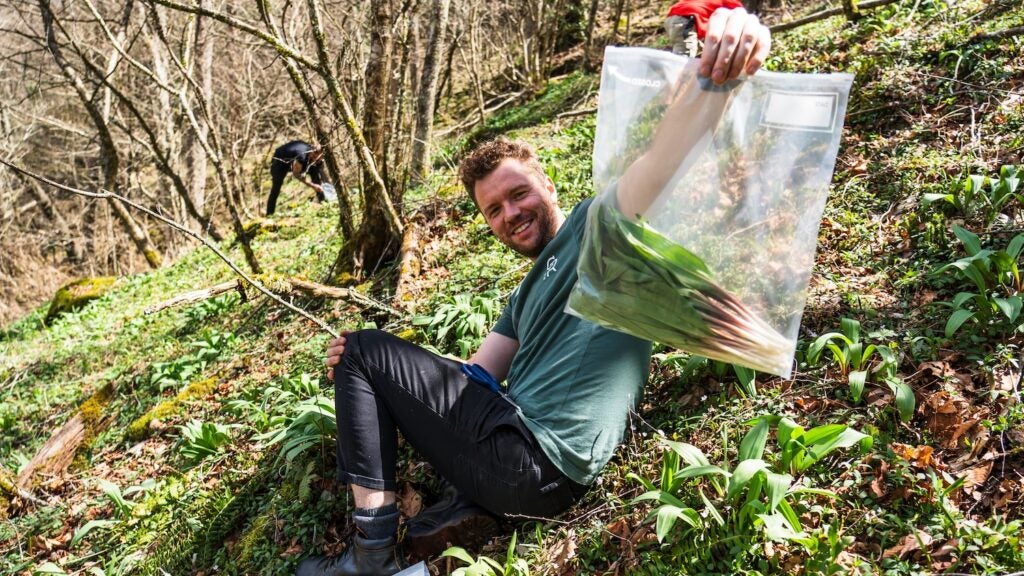“], “filter”: { “nextExceptions”: “img, blockquote, div”, “nextContainsExceptions”: “img, blockquote, a.btn, a.o-button”} }”>
Heading out the door? Read this article on the new Outside+ app available now on iOS devices for members!
>”,”name”:”in-content-cta”,”type”:”link”}}”>Download the app.
Talk to any self-reliant hillbilly such as myself in the spring, and you’ll hear about secret spots rife with ramps—wild onions—hat they can’t talk about but somehow can’t stop talking about. They won’t tell you exactly where their ramp patches are located; they’re more likely to give you a handful and let the ramps speak for themselves.
A ramp’s powerful flavor isn’t for everyone, but for those that enjoy them they can’t get enough. Old timers throughout Appalachia tell stories of kids getting kicked out of school for smelling like ramps—sometimes the smell would permeate from within after eating too many, sometimes a ramp-containing lunch box would have to be quarantined and other times clever kids looking to skip class would apply those ramps directly to their skin.
This plant is now a culinary sensation. Ramps have exploded in popularity recently, and these days you’re just as likely to see a tattooed chef at a Michelin-star restaurant out in the woods ramp hunting as you are to see hillbillies like me. High-end restaurants use ramps to add intense flavor to their dishes and vibrant pops of color to their plating. In April and May, folks at farmers’ markets sell them for as much as they can get and Instagram blooms with ramp-hunting posts and recipes that will make you start drooling on your phone.
How To Forage Ramps
Ramp pickin’ is a polarizing endeavor, and everyone in Appalachia follows their own strategy dogmatically. I’m a ramp foraging enthusiast, so here’s my best advice: If you’re looking to incorporate ramp leaves in your recipes, pick earlier in the season while the leaves are tender and tastier. If you want your dishes to be more bulb-forward, harvest your ramps toward the end of the season, just as their leaves start to turn yellow, to allow enough time for the bulbs to fully mature.
If you find a dense patch of ramps you can harvest a few bulbs with their roots intact to thin them out and help promote growth. Cut the roots off of what you harvest—leaving approximately ¼-inch of bulb attached to the roots—and plant them an arm’s-length away from all the others to help the ramp patch spread even more.
When harvesting in thinner patches, carefully dig down into the ground with a stick or your knife and cut through the bulb ¼-inch above the roots. If you plan on utilizing the green leaves, selectively cut one leaf from each plant. Although Leave No Trace isn’t necessarily 100 percent possible when foraging, try to make as little of an impact on the land as you can.
Ramps are a resource that will live on forever if harvested properly. Check local rules and regulations if you’re planning on harvesting on public lands, seek permission before harvesting on private lands and if you’re hesitant to start harvesting on your own, check out the local farmer’s market on your next resupply or zero day in-town. Then, you can make these five recipes to season up your on-trail meals.
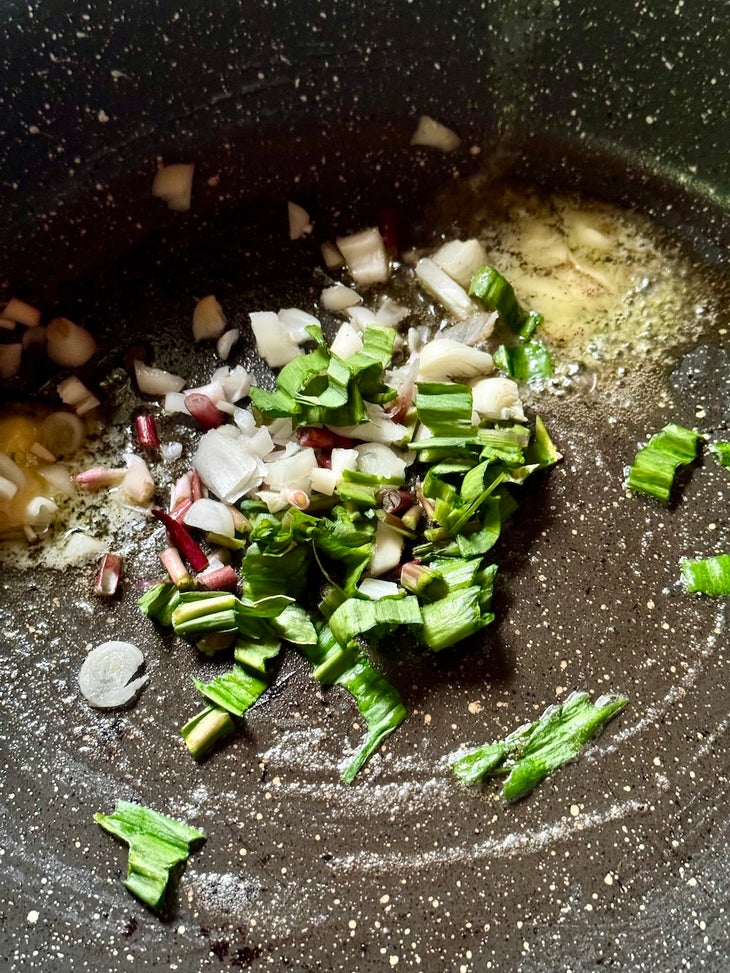
Kilt Ramps
Kilt ramps are to die for. Technically speaking, they are “killed” but if you’d like to sound like a local you ought to pronounce it “kilt.” In Appalachian kitchens, greens are killed by pouring bacon grease over them which makes them wilt. Although this cholesterol bomb probably shouldn’t be eaten daily, it’ll give you a boost of energy on the trail and set an FKT (funkiest known taste) for your mouth. Grab a package of pre-cooked bacon and throw it in the pan with your roughly chopped ramps. Once the grease has released and your ramps are kilt, add a couple of eggs and pan-scramble them. Combine your kilt ramps, eggs, bacon, and cheese du jour onto your bread or bagel of choice for a bomber breakfast sandwich.
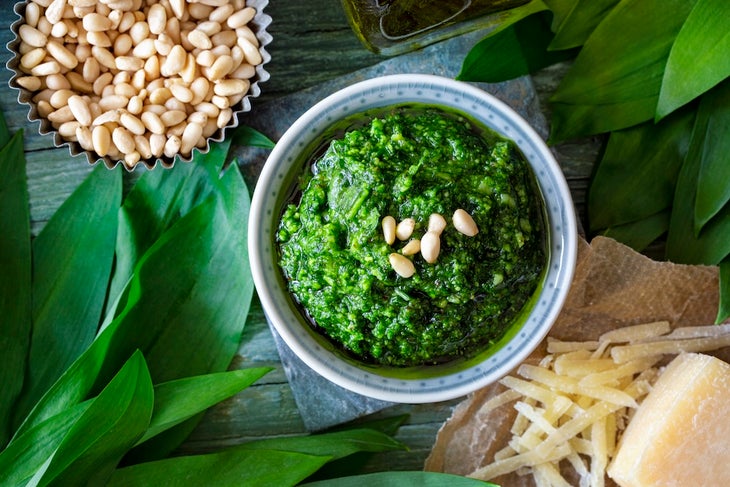
Ramp Pesto
Ramps are one of the first plants to pop up in spring, and their vibrant green leaves offer such a juxtaposition to the brown forest floor that you can spot them a mile away. That green looks great on plates—their vibrance is of the reasons ramps are so sought after by the restaurant industry. To make ramp pesto, harvest a handful or two of ramp leaves (or 8 ounces of them) and finely chop them. In a bowl, add ½ cup of olive oil, ½ cup of parmesan cheese and ¼ cup of finely chopped nuts and combine. Traditionally pine nuts are used, but walnuts or almonds are a worthy and more readily available substitute on trail. Sauce up your noodle of choice (angel hair pasta cooks quickly in the backcountry and gives you plenty of surface area for your sauce to stick) and serve with a side of bread to double-down on carbs for tomorrow’s hike.

Ramp Tacos
Once you taste this cultural flavor fusion you’ll agree that ramps and tacos were born to be amigos. Essentially, you’re just substituting fresh ramps for green onions, but the flavor boost you’ll get is a game-changer. Whatever type of taco you choose to make (beef, chicken, or veggie), add freshly chopped ramps as a garnish to introduce a bold new flavor to the timeless taco. Pro-tip: Ditch the tortillas and drop your toppings straight into a single-serve bag of crushed up Doritos for some ultra-flavorful walking-tacos.
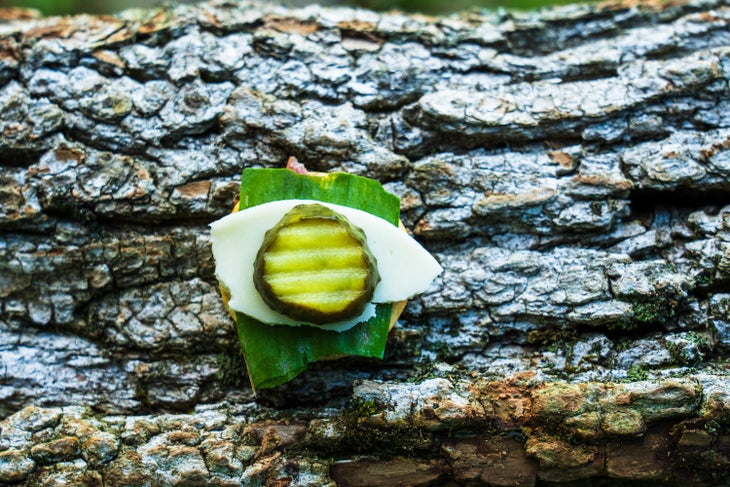
Rampcuterie
There once was a time where trail-side charcuterie meant cracking open a Lunchable, but modern day adventurers have begun bringing elaborate spreads with them and now, the backcountry is more boujee than ever. Ditch the standard serving board for an on-site option like a log, or a flat rock. Lay out a spread of your favorite crackers like Wheat Thins or Triscuits, add slices of salami or soppressata, break out the stinky cheese (it’ll distract from whatever natural funk you’re probably rocking), add an array of pickled things, and then add a piece of ramp leaf, et voilà, rampcuterie. If your crackers have crumbled in your pack, ramp leaves can be used as a delicate outer wrap to incorporate all your ingredients in every bite.
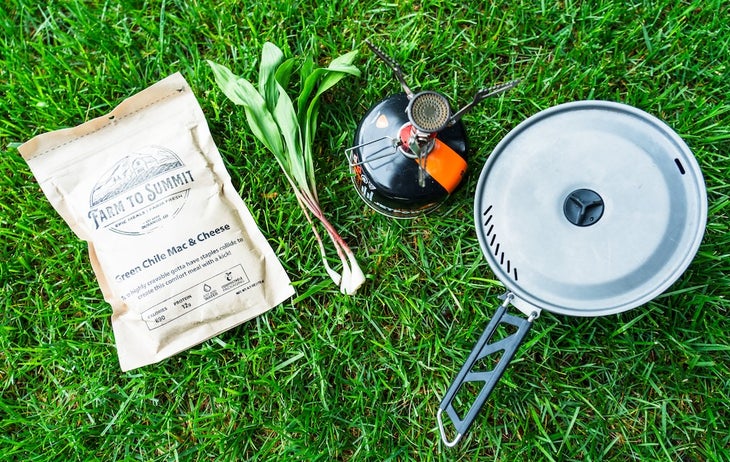
Dress Up Dehydrated Meals
In the last decade, the flavor profile of dehydrated meals has gone from gross to palatable to downright delicious, but even the best dehydrated options can benefit from a ramp’s fresh crunch and garlicky-onion punch. Depending on the meal, you’ll want to incorporate ramp greens and/or bulbs into the mix to punch it up. I added green leaves and bulbs to my chili mac, and it fully delivered. It lent it just the right amount of flavor and the vibrant green leaves added a chef’s kiss to this otherwise ordinary dish.
